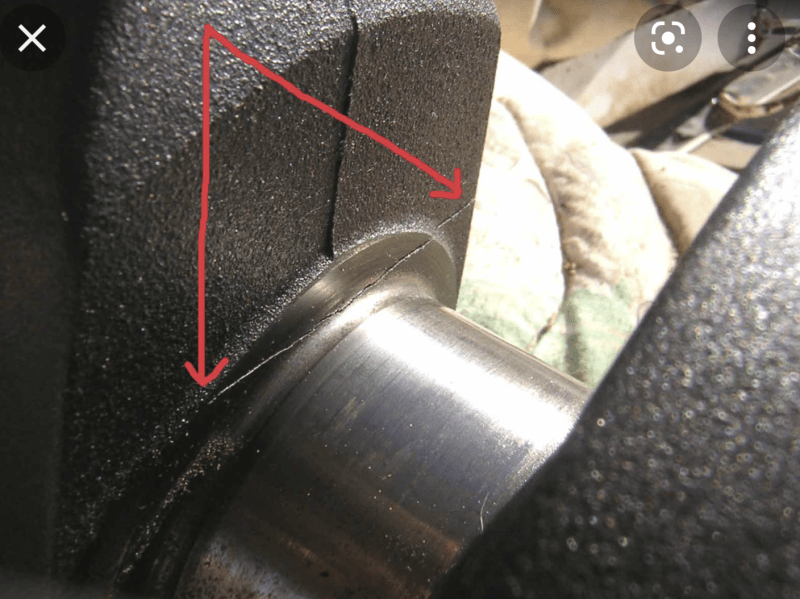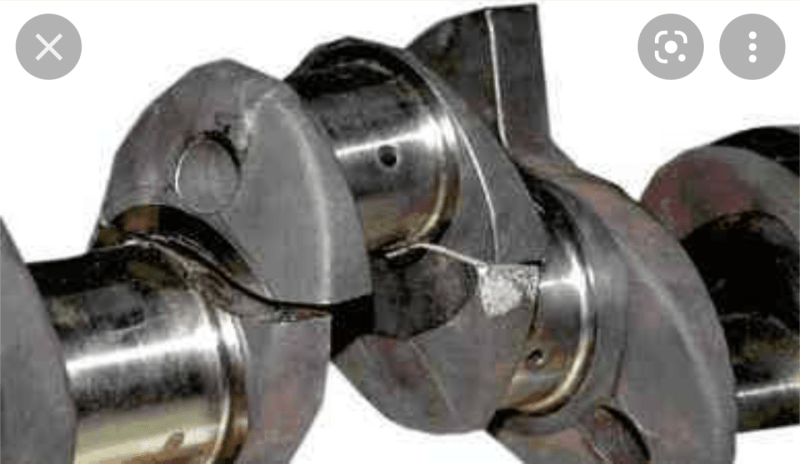I have never heard anyone discuss the implications of skimming a cylinder head, and often wondered why.
Suppose I have a twin cam cylinder head, and the camshaft axes are on the split plane where the rocker cover is fitted, and the rocker cover forms half of the cam journals.
Let's say when this cylinder head is manufactured, the distance from the fire-face to the camshaft journals is 100mm, thus the dimension from the fire-face to the rocker cover face is 100mm.
Now suppose a mechanic has removed my cylinder head to replace a leaking gasket, and he notices the cylinder head has a twist in it.
If he sets it on a surface plate, it rests on two diagonal corners, but a 1mm shim can be inserted into one of the other corners, to stop it rocking.
He takes the head to a machine shop.
The machinist sets the cylinder head down on his mill on the rocker face, and adds a 0.5mm shim at each of the relevant diagonal corners, so as to take away any rock, then the cylinder head is clamped to the milling machine table.
He then gradually removes material from the fire-face until he gets a clean cut, and in doing so, he has removed 0.5mm from the two high corners, and virtually nothing from the low corners.
He returns the cylinder head to the mechanic who rebuilds the engine, and that's the job done.
BUT hold on.
If the cylinder head had been measured with a micrometer after being removed from the mill, measuring from the fire-face up to the rocker cover face, the dimension would have been virtually 100mm in two places, but would vary everywhere else between 100mm and 99.5mm.
So when this cylinder head is clamped down onto the engine block, the rocker face will no longer be a flat face, but will have a 0.5mm deviation from flat, and as such, I would now have camshaft axes which likewise, are no longer straight.
This means when the cams are set into place, and the rocker cover clamped on, the camshafts are in reality being bent by a value close to 0.5mm over their length.
Does nobody think about this, or do they just not care about it?
Suppose I have a twin cam cylinder head, and the camshaft axes are on the split plane where the rocker cover is fitted, and the rocker cover forms half of the cam journals.
Let's say when this cylinder head is manufactured, the distance from the fire-face to the camshaft journals is 100mm, thus the dimension from the fire-face to the rocker cover face is 100mm.
Now suppose a mechanic has removed my cylinder head to replace a leaking gasket, and he notices the cylinder head has a twist in it.
If he sets it on a surface plate, it rests on two diagonal corners, but a 1mm shim can be inserted into one of the other corners, to stop it rocking.
He takes the head to a machine shop.
The machinist sets the cylinder head down on his mill on the rocker face, and adds a 0.5mm shim at each of the relevant diagonal corners, so as to take away any rock, then the cylinder head is clamped to the milling machine table.
He then gradually removes material from the fire-face until he gets a clean cut, and in doing so, he has removed 0.5mm from the two high corners, and virtually nothing from the low corners.
He returns the cylinder head to the mechanic who rebuilds the engine, and that's the job done.
BUT hold on.
If the cylinder head had been measured with a micrometer after being removed from the mill, measuring from the fire-face up to the rocker cover face, the dimension would have been virtually 100mm in two places, but would vary everywhere else between 100mm and 99.5mm.
So when this cylinder head is clamped down onto the engine block, the rocker face will no longer be a flat face, but will have a 0.5mm deviation from flat, and as such, I would now have camshaft axes which likewise, are no longer straight.
This means when the cams are set into place, and the rocker cover clamped on, the camshafts are in reality being bent by a value close to 0.5mm over their length.
Does nobody think about this, or do they just not care about it?

![[wink] [wink] [wink]](/data/assets/smilies/wink.gif)

